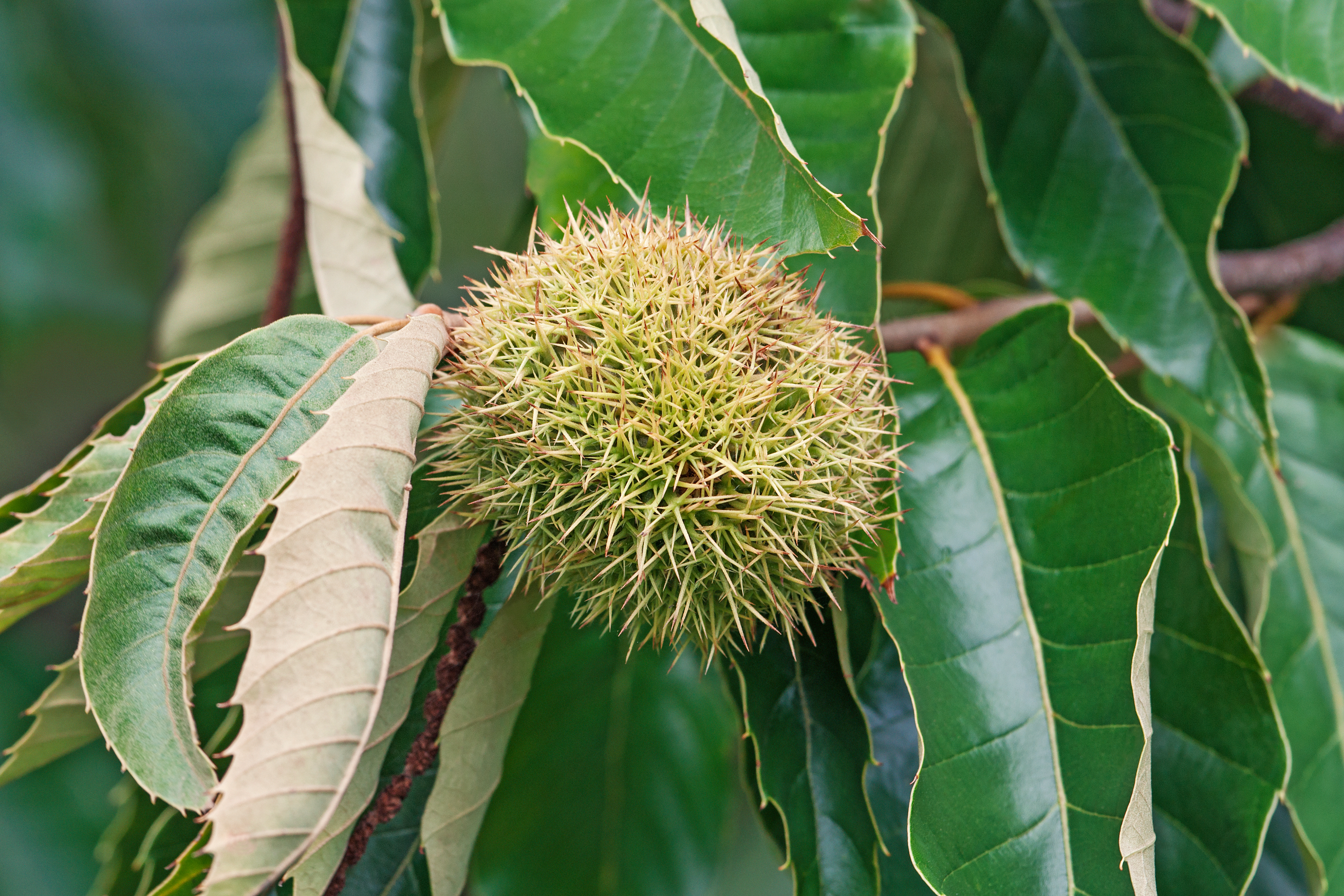American Chestnut
(Castanea dentata)

Description
The American chestnut (Castanea dentata) is a large deciduous tree of the beech family native to eastern North America. The American chestnut was one of the most important forest trees throughout its range and was considered the finest chestnut tree in the world. Castanea dentata is a rapidly growing deciduous hardwood tree, historically reaching up to 30 metres (98 ft) in height, and 3 metres (9.8 ft) in circumference. It ranged from Maine and southern Ontario to Mississippi, and from the Atlantic coast to the Appalachian Mountains and the Ohio Valley. C. dentata was once one of the most common trees in the Northeastern United States. In Pennsylvania, it is estimated to have comprised 25–30% of all hardwoods. The tree's huge population was due to a combination of rapid growth and a large annual seed crop in comparison to oaks which do not reliably produce sizable numbers of acorns every year. Nut production begins when C. dentata is 7–8 years old. There are several similar chestnut species, such as the European sweet chestnut (C. sativa), Chinese chestnut (C. mollissima), and Japanese chestnut (C. crenata). The American species can be distinguished by a few morphological traits, such as leaf shape, petiole length and nut size. For example, it has larger and more widely spaced saw-teeth on the edges of its leaves, as indicated by the scientific name dentata, Latin for "toothed". According to a 1999 study by the American Society for Horticultural Science, the Ozark chinkapin, which is typically considered either a distinct species (C. ozarkensis) or a subspecies of the Allegheny chinkapin (C. pumila subsp. ozarkensis), may be ancestral to both the American chestnut and the Allegheny chinkapin. A natural hybrid of C. dentata and C. pumila has been named Castanea × neglecta. It can be distinguished from the American chestnut by its hairy twig tips which are in contrast to the hairless twigs of the American chestnut. The chestnuts are in the beech family along with beech and oak, but are not closely related to the horse-chestnut, which is in the family Sapindaceae. The chestnut is monoecious, producing many small, pale green (nearly white) male flowers found tightly occurring along 6 to 8 inch long catkins. The female parts are found near the base of the catkins (near twig) and appear in late spring to early summer.
Taxonomic tree:







